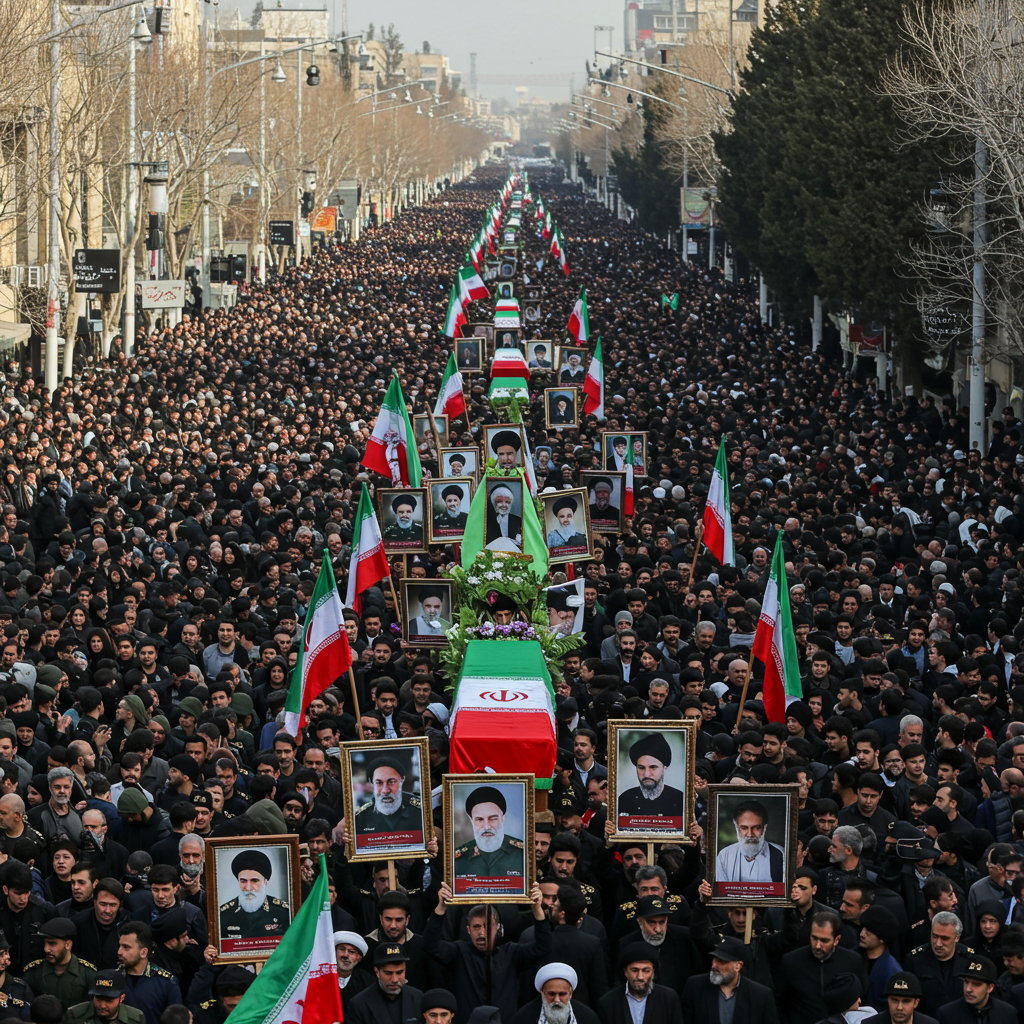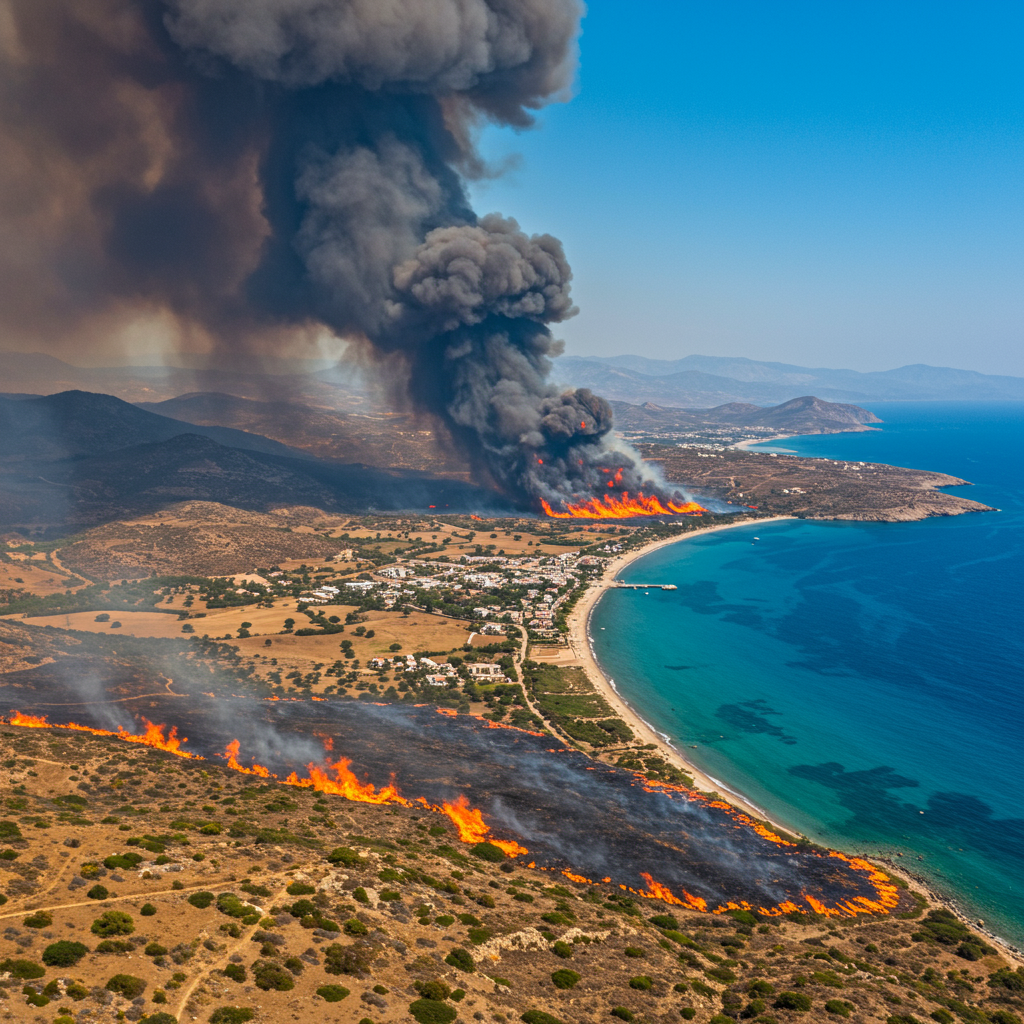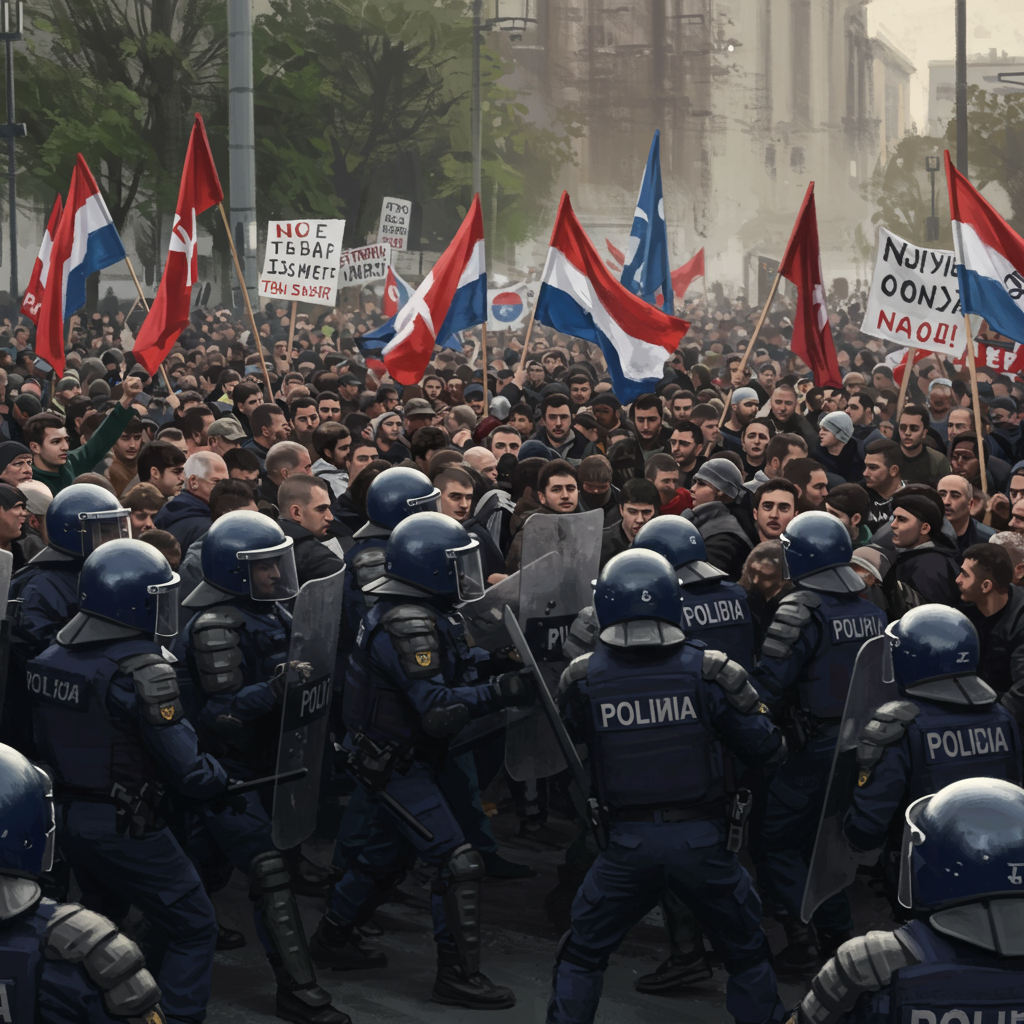In a powerful display of mourning and defiance, Iran held a massive state funeral in Tehran on Saturday, June 28, 2025, honoring dozens of top military commanders and prominent nuclear scientists killed during the recent 12-day conflict with israel. Thousands filled the streets, carrying portraits of the deceased and waving national flags, underscoring the deep impact of the losses sustained by the Islamic Republic during Operation Rising Lion.
This significant public ceremony followed a intense period of aerial conflict, described by some as the worst blow to Iran since the 1980s war with Iraq. The funeral served a dual purpose: a somber farewell to key figures and a platform for the regime to project strength and convey messages to its adversaries and its own populace.
Honoring High-Ranking Figures Lost in Conflict
The state funeral specifically commemorated approximately 60 individuals, including at least 10 senior military commanders and 16 scientists. Among the most prominent figures honored were the Chief of Staff of the iranian Armed Forces, Major General Mohammad Bagheri, who was reportedly killed in the initial Israeli strikes. Also mourned was the head of the Islamic Revolutionary Guard Corps (IRGC), General Hossein Salami, who died on the first day of the conflict, and General Amir Ali Hajizadeh, head of the IRGC’s Aerospace Force and ballistic missile program.
Other high-ranking officials named among the deceased included Gholam-Ali Rashid, commander of Khatam al-Anbiya (Emergency Command), and Ali Shadmani from the Hatam al-Anbiya Central HQ. The ceremony also paid tribute to nuclear scientist Mohammad Mehdi Tehranchi, as well as four women and four children, highlighting the broader human cost of the hostilities. The scale of these losses, particularly among the military and scientific elite, underscores the strategic impact of Israel’s operation.
Tehran Streets Fill with Mourners and Messages
The funeral proceedings began in Tehran’s Islamic Revolution Square (Enghelab Square) and moved in a lengthy procession to Azadi Square. Coffins, draped in Iranian flags and adorned with large portraits of the fallen, were transported through the city center on trucks. Crowds dressed predominantly in black lined the route, with many touching the caskets or throwing rose petals as they passed. State television coverage showcased images of ballistic missiles displayed on a stage during the event, a clear symbol of military resolve.
The atmosphere was charged with emotion and political fervor. Mourners chanted anti-Israel and anti-U.S. slogans, including “Death to America” and “Death to Israel.” Calls were also heard for the prosecution of Rafael Grossi, head of the International Atomic Energy Agency (IAEA). While the large turnout was presented by state media as a demonstration of national unity and support for the regime, some analysts suggested it might also reflect the impact of intensified internal security crackdowns, leading people to participate in public mourning out of perceived necessity.
Senior Leadership Attends, Supreme Leader Absent
Several senior Iranian figures attended the funeral, including President Masoud Pezeshkian, Foreign Minister Abbas Araghchi, Quds Force head Gen Esmail Qaani, and Gen. Ali Shamkhani, who himself was reportedly wounded in an Israeli strike but survived. Mojtaba Khamenei, son of Supreme Leader Ayatollah Ali Khamenei, was also present.
Notably absent from the public ceremony was Supreme Leader Ayatollah Ali Khamenei. Reports indicated that Khamenei had not made a public appearance since before the war began, having reportedly gone into hiding. While he typically leads prayers for senior commanders, his absence from this large-scale public event was conspicuous, fueling speculation about his status or security concerns following the extensive Israeli strikes.
The Context: Israel’s Operation Rising Lion
The conflict leading to these deaths was initiated by Israel on June 13 with Operation Rising Lion. Israel stated its primary objective was to prevent Iran from developing nuclear weapons. Over the 12-day period, Israel conducted an extensive aerial campaign involving approximately 1,500 sorties and hitting around 900 targets, comprising some 1,500 components.
These strikes reportedly destroyed about 200 ballistic missile launchers, estimated to be roughly half of Iran’s existing stockpile, and impacted over 35% of Iran’s missile production facilities. Air defense systems, radars, surface-to-air missile launchers, and control centers were also neutralized, with over 80 SAM launchers reportedly struck. The operation also claimed to have destroyed fifteen outdated fighter jets and hit six airports, including one as far as Mashhad, demonstrating the reach of the Israeli forces.
Internal Crackdown Intensifies Post-Conflict
Following the ceasefire on June 25, reports indicated that Iran significantly intensified its internal security crackdown. This effort has reportedly involved widespread arrests and even executions of individuals accused of espionage on behalf of Israel. Saeed Ghasseminejad, a Senior Advisor at the Foundation for Defense of Democracies (FDD), suggested the regime employs “trumped-up charges” and the death penalty to “spread terror among the Iranians.” He also posited that Operation Rising Lion might have exposed the Iranian regime as a “paper tiger,” weaker than perceived.
Data from human rights organizations support these claims. The Human Rights Activists News Agency (HRANA) reported 705 individuals arrested on “political or security-related charges.” State-run Fars News Agency corroborated this, stating 700 detentions for alleged collaboration with Israel. The nonprofit Iran Human Rights (IHR) warned that at least six individuals on death row for spying for Israel were at imminent risk of execution, adding that nine people had already been executed this year on similar charges.
Official Messaging and IAEA Standoff
Iranian officials utilized the funeral as a platform to deliver strong messages. An official identified as Eje’i declared that the large public turnout demonstrated the Iranian people’s resolve, signaling that “the blood of our martyrs will hasten the achievement of our goals” and that the nation “will not bow to humiliation.”
A key focus of official rhetoric was directed at the International Atomic Energy Agency (IAEA). Eje’i explicitly accused the IAEA of leaking intelligence and acting against Iran’s interests, stating that ending cooperation was “only natural.” This stance was reinforced by MP Hamid Rasai, who announced that, based on a parliamentary decision, IAEA inspectors and Director General Grossi were banned from entering Iran. Rasai justified disabling surveillance cameras by arguing that the IAEA’s failure to condemn the attack on Iran’s nuclear sites proved it was spying for Iran’s enemies.
Varying Casualty Counts Reflect Conflict’s Impact
The conflict resulted in significant casualties on both sides, though figures vary depending on the source. Iranian health ministry figures reported 610 people killed on the Iranian side and over 4,700 injured before the ceasefire. The activist news agency HRANA provided a higher Iranian death toll at 974, including 387 civilians. Israeli authorities, in contrast, claimed to have killed hundreds of Iranian soldiers, dozens of headquarters staff, and over 30 senior security officials, including three described as chiefs of staff, along with 11 nuclear scientists and over 20 Iranian commanders. Israel’s health ministry reported 28 killed in Israel and 3,238 injured. The sheer discrepancy in numbers highlights the fog of war and differing reporting methodologies, but all accounts confirm substantial losses, particularly for Iran’s military and strategic personnel.
Broader Tensions Remain High
Despite the ceasefire, the geopolitical tensions stemming from the conflict remain acute. US President Donald Trump reportedly stated that he would consider bombing Iran again. In response, Ayatollah Ali Khamenei was reported to have warned that Iran would strike US military bases in the Middle East if attacked again. The IRGC, in a statement on the day of the funeral, asserted that Israel and the US had “failed to achieve their stated objectives” in the war, suggesting a continued posture of defiance despite the heavy losses mourned at the state funeral.
The massive funeral ceremony in Tehran for the fallen commanders and scientists serves as a poignant marker of the human cost of the recent conflict and highlights the ongoing volatile dynamics between Iran, Israel, and the United States. The event combined national mourning with a clear political message of resilience and retribution, while the reported internal crackdown points to the regime’s efforts to consolidate control in the aftermath of the strikes.
Frequently Asked Questions
What high-ranking Iranian officials and scientists were killed in the recent conflict?
The conflict with Israel resulted in significant losses for Iran’s military and nuclear programs. Among the most prominent figures killed were Major General Mohammad Bagheri, Chief of Staff of the Iranian Armed Forces; General Hossein Salami, head of the IRGC; and General Amir Ali Hajizadeh, head of the IRGC’s Aerospace Force. Nuclear scientist Mohammad Mehdi Tehranchi was also killed. Other commanders like Gholam-Ali Rashid and Ali Shadmani were also reported among the deceased, alongside numerous other military personnel and scientists.
What was the name and context of the Israeli military operation that led to these deaths?
The Israeli campaign was officially named “Operation Rising Lion” and lasted for 12 days in June 2025. Israel stated its primary goal was to prevent Iran from developing nuclear weapons by targeting key figures and infrastructure. The operation involved extensive aerial strikes across Iran, hitting military headquarters, missile production facilities, air defense systems, and other strategic sites. The conflict resulted in casualties across various sectors of Iran’s defense and scientific apparatus.
How has Iran responded internally and internationally after the conflict and these losses?
Following the ceasefire, Iran reportedly intensified an internal security crackdown, leading to mass arrests and executions of individuals accused of spying for Israel. Internationally, Iran has adopted a defiant stance, using the funeral to send strong messages against the U.S. and Israel. Notably, Iranian officials accused the IAEA of compromising intelligence and declared a ban on IAEA inspectors and Director General Grossi from entering the country, along with plans to disable surveillance cameras at nuclear sites.




